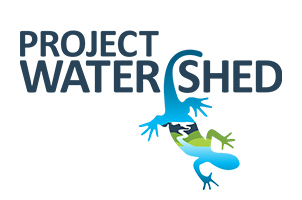Concrete Wall Found at Kus-kus-sum
We are happy to announce that we have re-mobilized to the site for the spring and have started removing the remaining concrete. Currently, most of the remaining concrete is in the form of a 170m-long wall that was found buried just behind the steel-piling wall that separates the site from the Courtenay River. Removing this concrete wall is the next step of the restoration and will be undertaken over the next two weeks. The steel-piling wall will remain in place throughout the work on site and its removal will be the very last step of the restoration work.
To remove the concrete wall, we will have to excavate near the river. Since our river is a tidal river, the water and water table are much higher during high tides. This means we will have to time our work with the low tide windows. For the next few weeks, those tidal windows fall later in the evening and work will have to be timed accordingly. As we remove this wall over the next two weeks, work at Kus-kus-sum will be starting later in the morning (10 or 11am) and will be continuing later into the evening (7-8pm). We will keep our work within the City of Courtenay noise bylaws and do what we can to minimize disruptions to our lovely neighbors and community.
We’re working closely with a marine engineer to ensure the steel-piling wall remains structurally sound throughout this process. We will continue environmental and archeological monitoring, and will be monitoring daily upstream, downstream, and at-site water quality in the Courtenay River.
The Kus-kus-sum site is an active work zone, please DO NOT enter the site without personal safety equipment (hard hat, steel toed boots and safety vest) and specific permission from Project Watershed staff to do so.
Related Posts
Mallard Creek Restoration Update for 2024
Restoration work in Mallard Creek will continue this year, including invasive removal, restoring connectivity, and trial planting of a new riparian species. Volunteer events starting in September 2024.
Volunteer at Kus-kus-sum Chamber of Commerce Event
We are showing Kus-kus-sum off to businesses in the Valley through a Chamber Business to Business event. We are looking for a few volunteers to assist with this event.
Coastal Plant Monitoring
Get involved with our new vegetation community science monitoring program!
Spring Field Trips
Throughout May and June Project Watershed will be taking elementary school classes out on field trips to learn about estuary and coastal ecology and to assist with planting and plant maintenance.
Working Together to Identify Forage Fish Spawning Beaches
This year marks the 5th year of a partnership between Comox Valley Project Watershed Society and North Island College on a long-term study to examine intertidal spawning habitats of forage fish in the northern Salish Sea.
Glen Urquhart Update – Spring 2024
Latest news from Glen Urquhart restoration progress for spring 2024.


